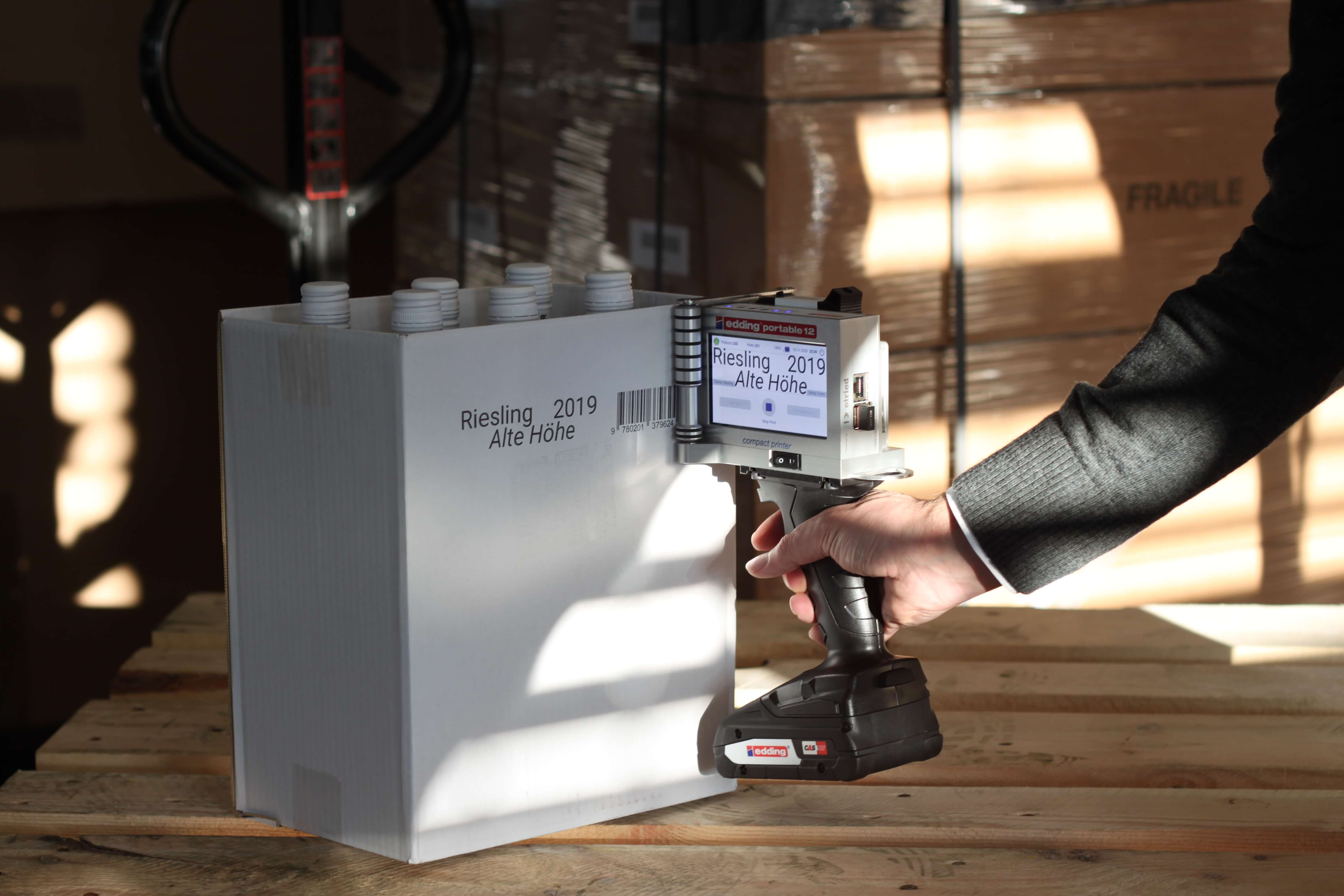Aesthetically, a wine bottle label needs to be visually appealing, echoing the brand values. It also has to communicate information beyond the wine’s origin, varietal type and vintage. For more and more wine drinkers, ethical considerations are coming into play. Consumers in the younger age groups, in particular, are scrutinising the bottle’s label to see whether a wine is organic, contains allergens, or has been sustainably produced.
The bar is also being raised on traceability. In the EU, for example, regulators require each bottle to display the bottler’s details together with an individual lot number, to provide traceability through the supply chain from grape to supermarket shelf. For the wine producers themselves, product traceability coding such as barrel and lot numbers makes it easier to detect counterfeits and to manage product recalls.
What’s needed is a coding and marking solution that delivers high quality, robust, reliable results, even in the wet environment of a bottling production line or the dust and cold of a distributor’s warehouse.
Fast, flexible, easy
edding compact printers have been designed to take the pain out of printing, freeing wine makers to focus on what they do best – making wine.
Thanks to edding’s range of expert inks, users can achieve high resolution, precision printing in almost any environment and on almost any substrate, including glass, metal and plastics.
The edding in-line 12 and portable 12 compact printers deliver the dual benefits of low up-front costs and zero maintenance costs. With a very affordable purchase price, they have been designed around advanced, clean Thermal Inkjet technology. That means minimal maintenance and no expensive service contracts.
The printers also offer maximum ease of use. Print information can be updated simply and quickly via the printer’s integrated touchscreen, a web browser or even a smartphone.

Maximum uptime
Wine production is seasonal, with production lines typically running for 3-6 months a year. Many industrial printers left idle for that length of time would require servicing. But that isn’t an issue with an edding compact printer. At most, all that’s required is a just a few seconds to replace the ink cartridge. As the printer takes less than a minute to start, it is also ideal for low volume production runs. And, for added peace of mind, if a problem was to occur then the printer’s powerful connectivity means it can be fixed remotely by our support team, without significant delay.
Finally, for secondary packaging there is no longer any need to take up valuable space storing a huge inventory of pre-printed labels to be affixed to the boxes. Labels and consumables are an expensive method of coding outer boxes, and direct inkjet coding can usually reduce these costs by 50% - 80%. This doesn’t even take into account the cost and time saving of reduced manual handling which inkjet coding provides. The compact in-line 12 slots easily into any production line, while the portable solution is great for small wineries wanting to code on individual boxes.